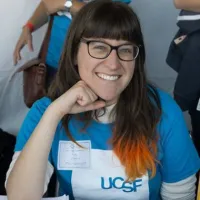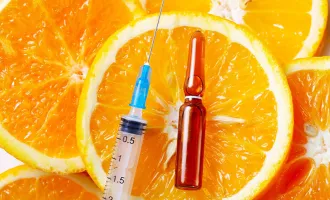
Photo by National Cancer Institute on Unsplash
Advancing Cancer Care
Predicting how cancer patients will respond to treatments has been a major challenge in the field of oncology, but a new preclinical laboratory model may help to more accurately predict treatment outcomes. This new model not only has the potential to create more personalized and more effective treatment plans for patients, but could also improve and accelerate drug screening and development.
Advancements began when scientists discovered that tumor cells taken from a patient and grown under the right conditions can grow, divide, and unite to create a three-dimensional miniature tumor in a dish, a cancer organoid.
In a paper published in the most recent issue of Science, Georgios Vlachogiannis and his colleagues did just that, generating patient-derived organoids (PDOs) from 110 biopsies collected from 71 patients with metastatic gastrointestinal cancers.
These PDOs, which take only six to eight weeks to grow, mimicked the physiology of the patient biopsies from which they were derived, sharing 96 percent of the same protein markers and genetic mutations. Furthermore, these similarities persisted for several months after the organoids were grown.
After establishing the biological similarity between PDOs and their matching patient tumors, the authors tested whether PDOs could be used to predict treatment outcomes in patients.
To accomplish this, Vlachogiannis and colleagues generated PDOs from pre-treatment and post-treatment tumor biopsies from a patient given the anti-cancer drug paclitaxel. Both the pre-treatment and post-treatment organoids were then exposed to paclitaxel.
After this in-lab treatment, the pre-treatment PDO exhibited decreased viability and increased cell death, whereas the post-treatment PDO showed no observable response.
This observation in the lab mirrored what was seen in the clinic. Initially, the patient’s tumor had responded positively to treatment with paclitaxel, but over time the tumor acquired resistance to the drug, leading to disease progression.
Similar findings were observed in PDOs established from other patients as well.
Based on all PDOs analyzed, the authors found that drugs that failed in the PDO failed 100 percent of the time in patients, and drugs that worked in the PDO worked 88 percent of the time in patients.
Although more complex than a layer of cells in a dish, organoids still exist outside a complete biological system. So, to further test the validity of their model, the authors implanted these organoids into mice, this time using PDOs derived from a patient resistant to the drug regorafenib and a patient who is a long-term responder to this drug.
Following implantation, mice were treated with regorafenib and the authors found that their tumor-in-a-dish model held up.
Mice with PDO implants from the regorafenib-sensitive patient responded positively to the drug — marked by damaged microvasculature, decreased blood flow, and increased cell injury of the tissue — whereas mice with PDO implants from the regorafenib-resistant patient showed no improvement.
PDO implants generated from pre- and post-treatment tumor biopsies from a patient who initially responded to regorafenib, but whose disease subsequently progressed, also responded as expected.
Regorafenib-treated mice with the pre-treatment derived PDO showed a significant reduction in microvasculature and increased survival, whereas no significant change was observed in regorafenib-treated mice with the post-treatment PDO implant.
Bench-to-bedside research, in which laboratory discovery is translated into clinical practice, is often a slow going process. Several studies suggest that on average it takes 17 years for research to turn into beneficial patient care.
In this study, PDOs reduce this time from years down to months, making the predictive power of PDOs all the more remarkable.
Still in the early phases, it remains to be seen how thoroughly useful PDO testing will become for drug discovery and personalizing patient care. However for many, this feels like a leap in a promising direction when it comes to cancer treatment.



